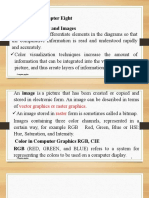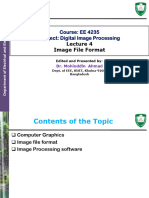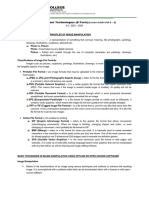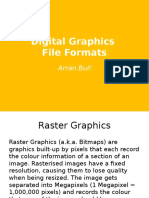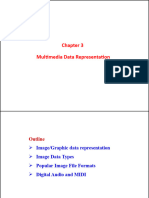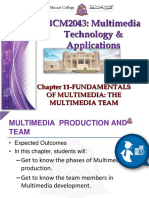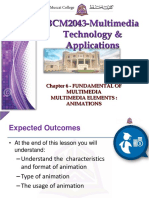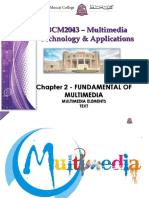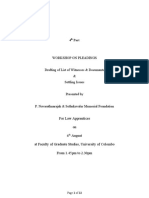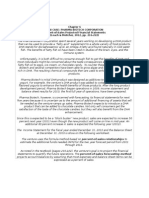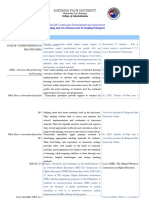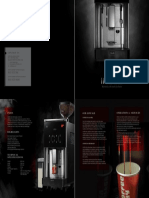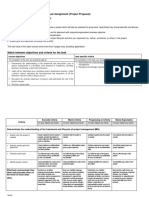0% found this document useful (0 votes)
453 views24 pagesChapter 3 - Image and Graphics
This document discusses fundamental multimedia elements, focusing on graphics and images. It describes the main types of graphics as raster/bitmap and vector graphics. Raster graphics use pixels to form images while vector graphics use paths and curves. The document also covers popular image file formats like TIFF, JPEG, GIF and PNG, explaining their characteristics and best uses. It discusses tools for graphics design, image enhancement and processing, highlighting steps like importing, analyzing and outputting images.
Uploaded by
روان البلوشيCopyright
© © All Rights Reserved
We take content rights seriously. If you suspect this is your content, claim it here.
Available Formats
Download as PDF, TXT or read online on Scribd
0% found this document useful (0 votes)
453 views24 pagesChapter 3 - Image and Graphics
This document discusses fundamental multimedia elements, focusing on graphics and images. It describes the main types of graphics as raster/bitmap and vector graphics. Raster graphics use pixels to form images while vector graphics use paths and curves. The document also covers popular image file formats like TIFF, JPEG, GIF and PNG, explaining their characteristics and best uses. It discusses tools for graphics design, image enhancement and processing, highlighting steps like importing, analyzing and outputting images.
Uploaded by
روان البلوشيCopyright
© © All Rights Reserved
We take content rights seriously. If you suspect this is your content, claim it here.
Available Formats
Download as PDF, TXT or read online on Scribd
/ 24

